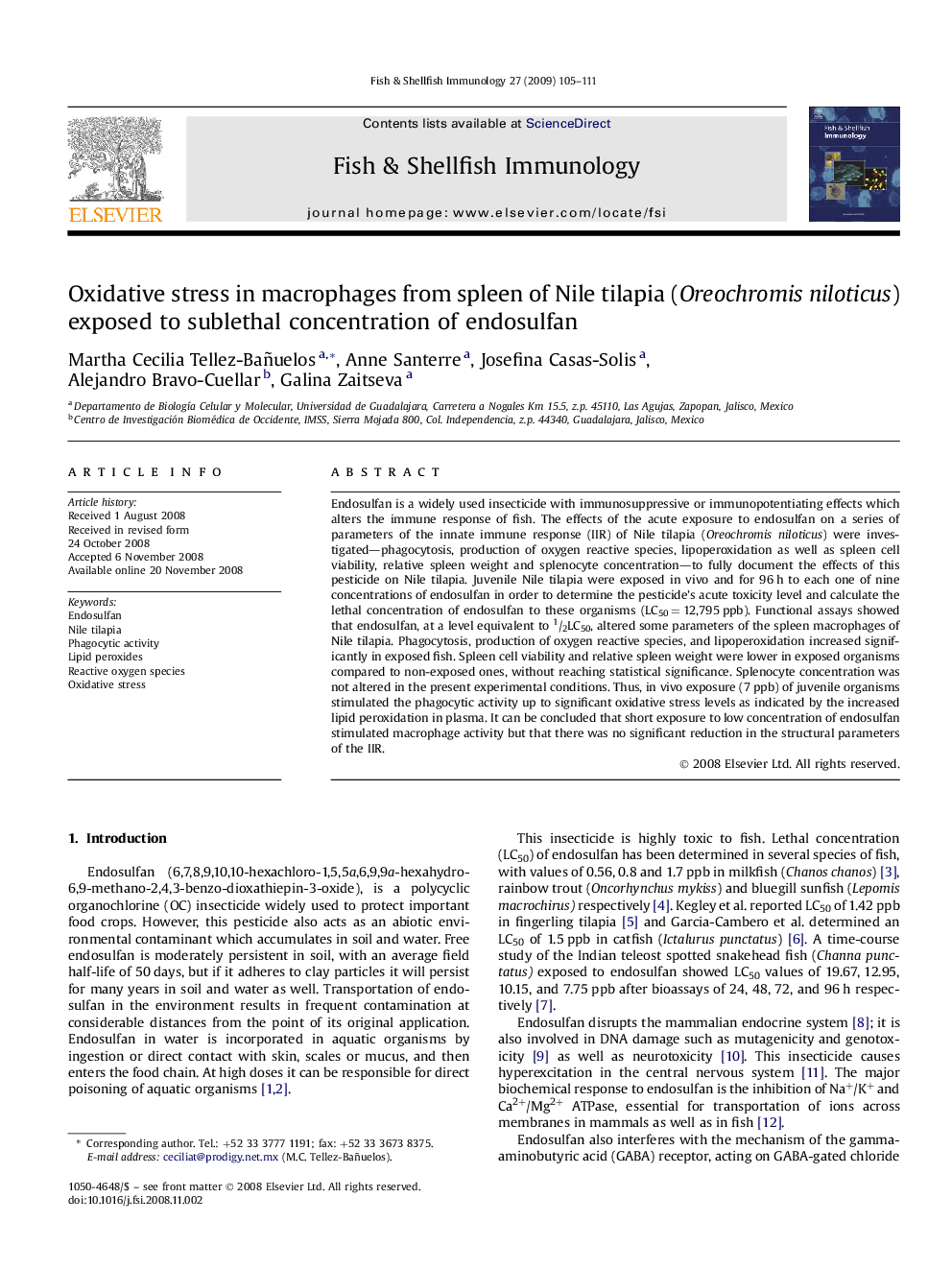| Article ID | Journal | Published Year | Pages | File Type |
|---|---|---|---|---|
| 2433208 | Fish & Shellfish Immunology | 2009 | 7 Pages |
Endosulfan is a widely used insecticide with immunosuppressive or immunopotentiating effects which alters the immune response of fish. The effects of the acute exposure to endosulfan on a series of parameters of the innate immune response (IIR) of Nile tilapia (Oreochromis niloticus) were investigated—phagocytosis, production of oxygen reactive species, lipoperoxidation as well as spleen cell viability, relative spleen weight and splenocyte concentration—to fully document the effects of this pesticide on Nile tilapia. Juvenile Nile tilapia were exposed in vivo and for 96 h to each one of nine concentrations of endosulfan in order to determine the pesticide's acute toxicity level and calculate the lethal concentration of endosulfan to these organisms (LC50 = 12,795 ppb). Functional assays showed that endosulfan, at a level equivalent to 1/2LC50, altered some parameters of the spleen macrophages of Nile tilapia. Phagocytosis, production of oxygen reactive species, and lipoperoxidation increased significantly in exposed fish. Spleen cell viability and relative spleen weight were lower in exposed organisms compared to non-exposed ones, without reaching statistical significance. Splenocyte concentration was not altered in the present experimental conditions. Thus, in vivo exposure (7 ppb) of juvenile organisms stimulated the phagocytic activity up to significant oxidative stress levels as indicated by the increased lipid peroxidation in plasma. It can be concluded that short exposure to low concentration of endosulfan stimulated macrophage activity but that there was no significant reduction in the structural parameters of the IIR.
